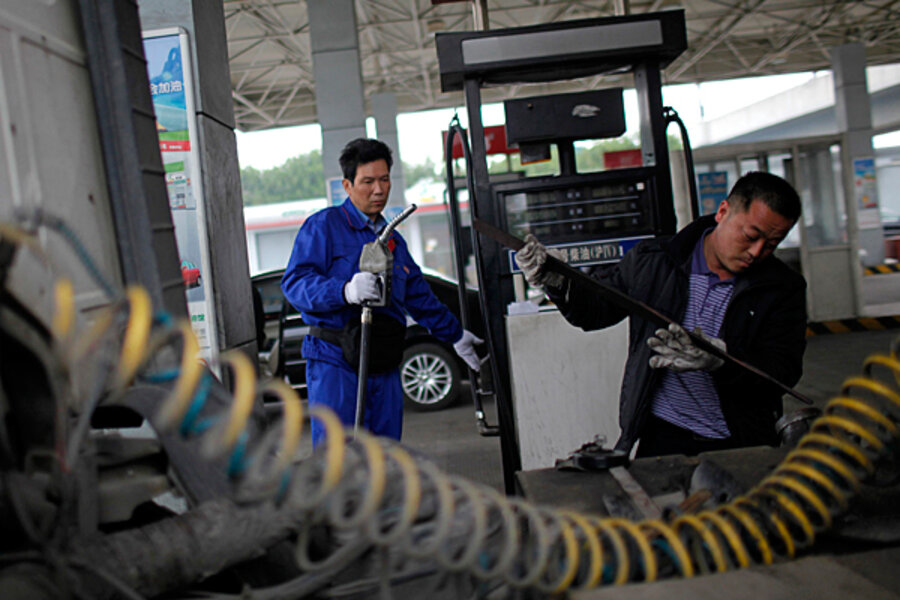Oil futures: How China could keep US gas prices low
Oil futures rose overall Tuesday, but news that China will raise interest rates to rein in inflation took some of the steam out of the oil futures market. Similar moves in India could also undercut oil futures.
That's good news for American car drivers hoping for a little relief at the gas pump by Memorial Day weekend, amid concerns that the Mississippi River flooding will have an impact on Louisiana oil refineries.
"China and India are trying to slow down [their economies]," Jonathan Barratt, managing director at Commodity Broking Services in Sydney, told Dow Jones Tuesday. "Look at China's manufacturing and trade surplus – [the country] has got to do something," he said.
If India and China raise interest rates and tighten monetary policies, it could cause lower demand for oil in those nations, with a knock-on effect of deflating oil futures and easing pump prices for US car drivers. An oil future is an agreement between two parties to buy and sell oil at a set price.
Oil futures had traded as high as $103.95 and as low as $100.12 Tuesday closing up 1.3 percent at $103.88 on the New York Mercantile Exchange, according to MarketWatch. This gained on a 5 percent rise in oil futures Monday, following a sharp drop last week.
Commodities such as oil are still caught in the "tug of war of a two-tiered global economy," analysts at Bank of America-Merrill Lynch said in an investor note, reported Dow Jones.
"Developed markets continue to struggle with high levels of debt and disinflationary pressures, as emerging markets are experiencing fast economic growth and inflation," they said. That is explicit in China, where consumer prices climbed 5.3 percent in April from a year earlier, according to Bloomberg, spurring the central bank to increase interest rates once more this year, adding to four since mid-October.
To be sure, Chinese demand for oil remains voracious. The world will need an average of 29.87 million barrels of crude a day from the Organization of Petroleum Exporting Countries (OPEC) this year, about 400,000 a day more than last year because of “roaring” economic growth in China, the group said in its May market report.
China imports of crude oil expanded 1.7 percent in April from a year earlier, hitting the third-highest net crude imports on record at 5.24 million barrels a day, just shy of February’s 5.25 million barrels a day, according J.P. Morgan data cited in the MarketWatch report.
Recent reports from the International Energy Agency and the Department of Energy predicted that China, India, and other developing nations will consume more oil as they build factories and buy cars, according to a recent article in The New York Times.





